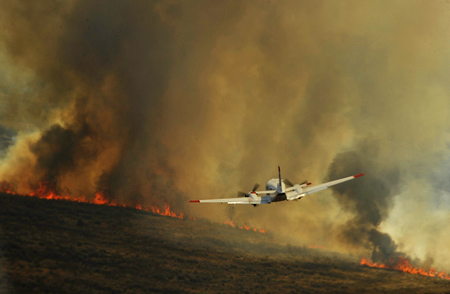This month is part two of the brief overview of the history of the U.S. Forest Service’s fire policy. In the past few weeks, Loose Leaf posts have covered the recent, temporary halt to the “let it burn” policy in light of the tinderbox quality of the West, partially due to the current drought conditions. As you’ll remember, the “let it burn” policy evolved in the 1970s to counteract years of total fire suppression. Rome wasn’t built in a day, however; years of fire fuel — accumulated on forest floors — are making this summer’s fires particularly ferocious. But what’s that about the Healthy Forests Initiative and the very exciting regulatory actions I promised last month? I’m glad you asked.

As briefly mentioned before, the National Environmental Policy Act (NEPA) requires that an agency undertake either an environmental assessment (EA) or the more-involved environmental impact statement (EIS) for any major federal action that may significantly affect the environment. An EA is the basic evaluation of the potential environmental impacts of a federal action, and it leads to one of two results: a Finding of No Significant Impact (yes, a FONSI) or a determination that an EIS is needed — sometimes agencies forgo the EA and jump straight to an EIS. An EIS, as it stands to reason, is a much deeper look at a project’s environmental impact. If, however, an agency has created a categorical exclusion for a particular action, which saves time and money in getting a project off the ground, than neither an EA nor an EIS is needed.
The Healthy Forests Initiative, in conjunction with the Healthy Forests Restoration Act (HFRA), developed categorical exclusions for certain projects intended to reduce forest undergrowth that feeds fires, as well as activities to repair or rehabilitate lands damaged by fire. HFRA is not without its detractors. With no requirements for environmental review in specific instances, concern was raised that old-growth trees would be removed in the name of clearing out forests to lessen fuel available for large conflagrations. On the other side, because HFRA actions are only allowed on land under the control of the Bureau of Land Management and the Forest Service, the ultimate utility of HFRA is limited.

HFRA also includes provisions that accelerate NEPA review of hazardous-fuel-reduction projects near Wildland-Urban Interfaces (WUIs). As many environmental attorneys will tell you, the NEPA process can take a significant amount of time to complete, arousing either the ire or relief of the affected parties. WUIs are those areas of land that have homes either abutting or incorporated within lands that are particularly prone to fire. By accelerating the NEPA review for fuel-reduction projects in those areas, HFRA placed additional significance upon protecting the homes and communities interspersed among areas most susceptible to fire. In addition, NEPA review is also accelerated for ecosystems currently suffering, or at imminent risk, from a disease or insect epidemic.
Perhaps reflected by the ever-expanding set of acronyms, fire management is an ongoing concern. Resource management plans coordinating the use and managing of lands and forests are written and rewritten for different areas. Congress continues to pass additional legislation to help deal with the ever-changing threats from fire, such as the Federal Land Assistance, Management and Enhancement Act of 2009 (the FLAME Act), providing much needed funding for fighting wildfires. And groups such as American Forests continue the never-ending task of educating the public about the contributing factors of fire. While Smokey Bear was right that “only you can prevent forest fires,” it is a nonstop effort by the Forest Service to temper their strength, size and ultimate impact.
“The most tangible of all visible mysteries — fire.” Leigh Hunt, English essayist and poet